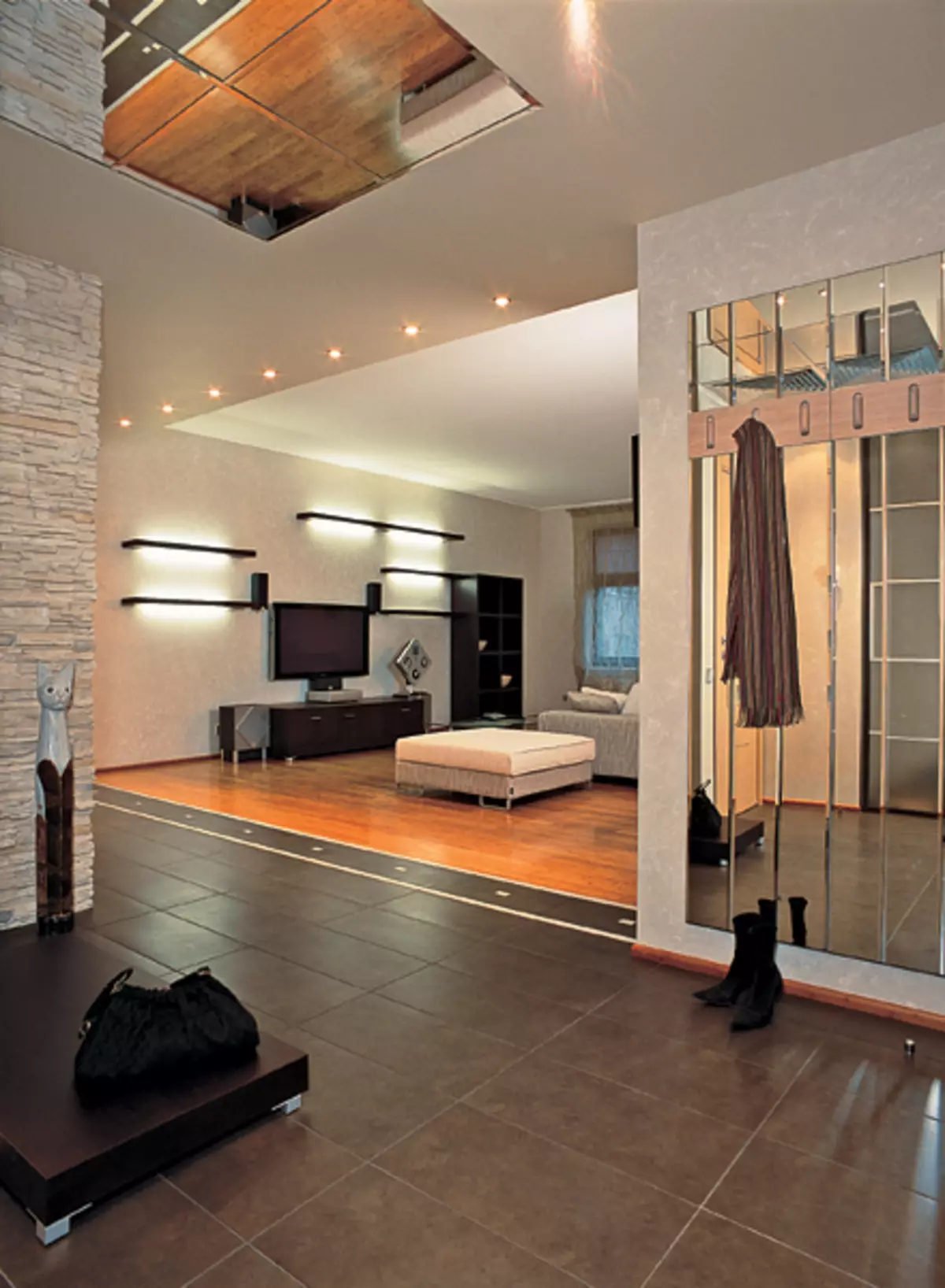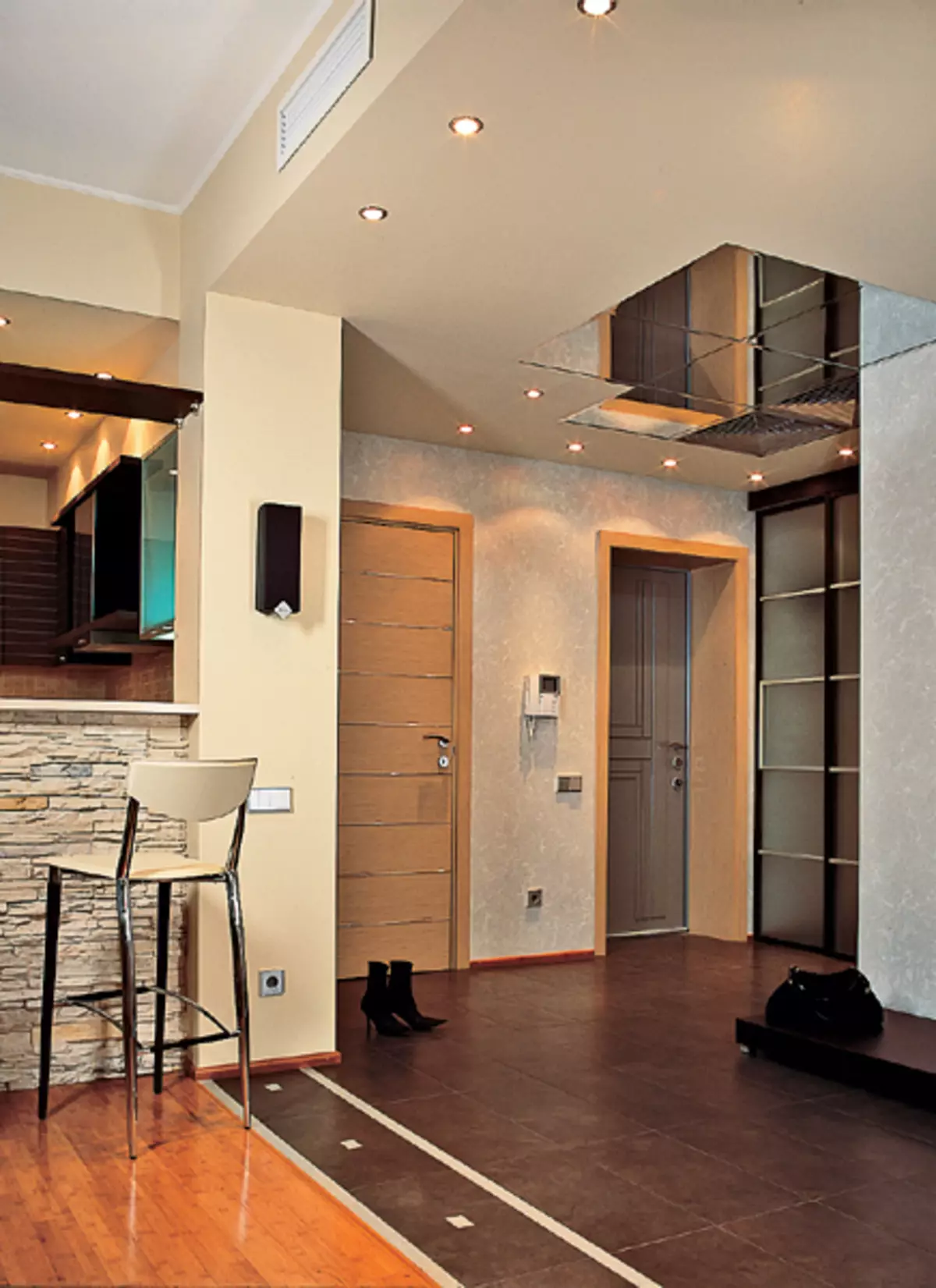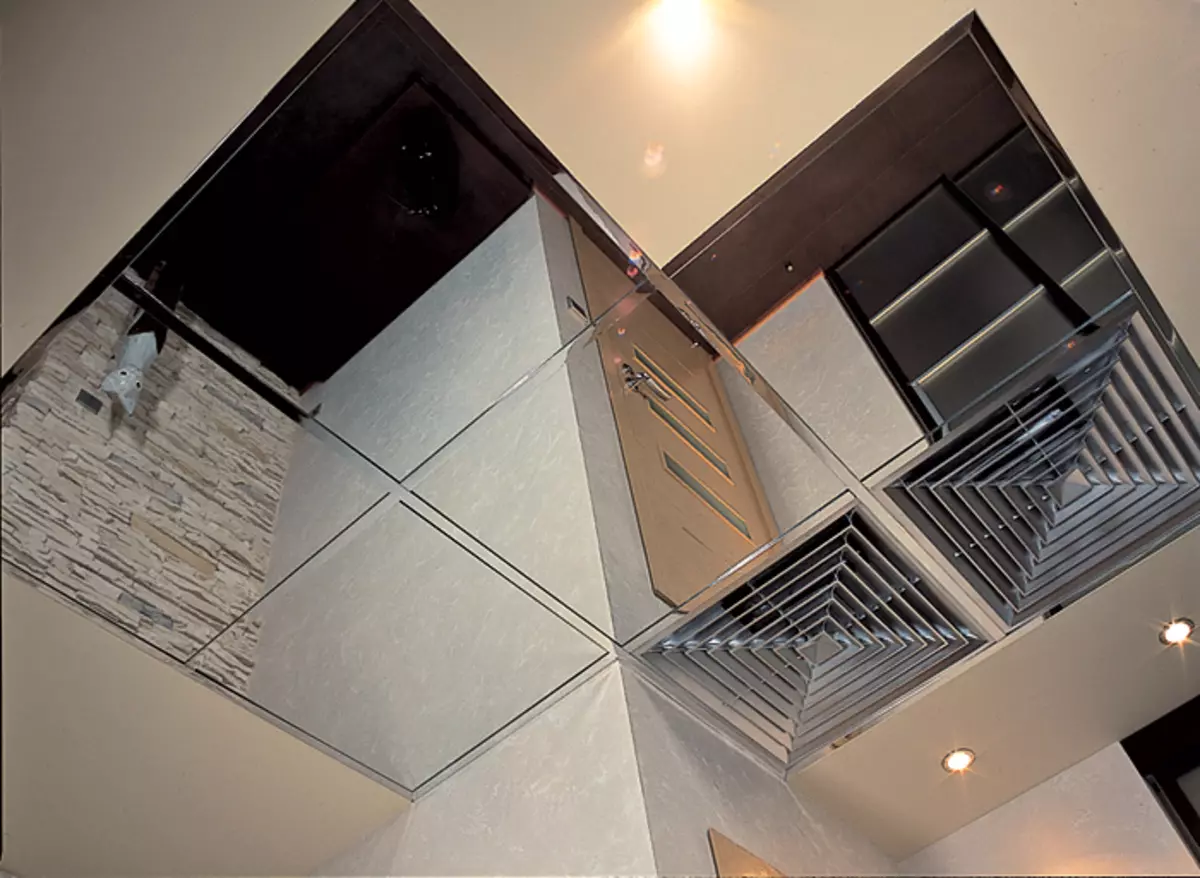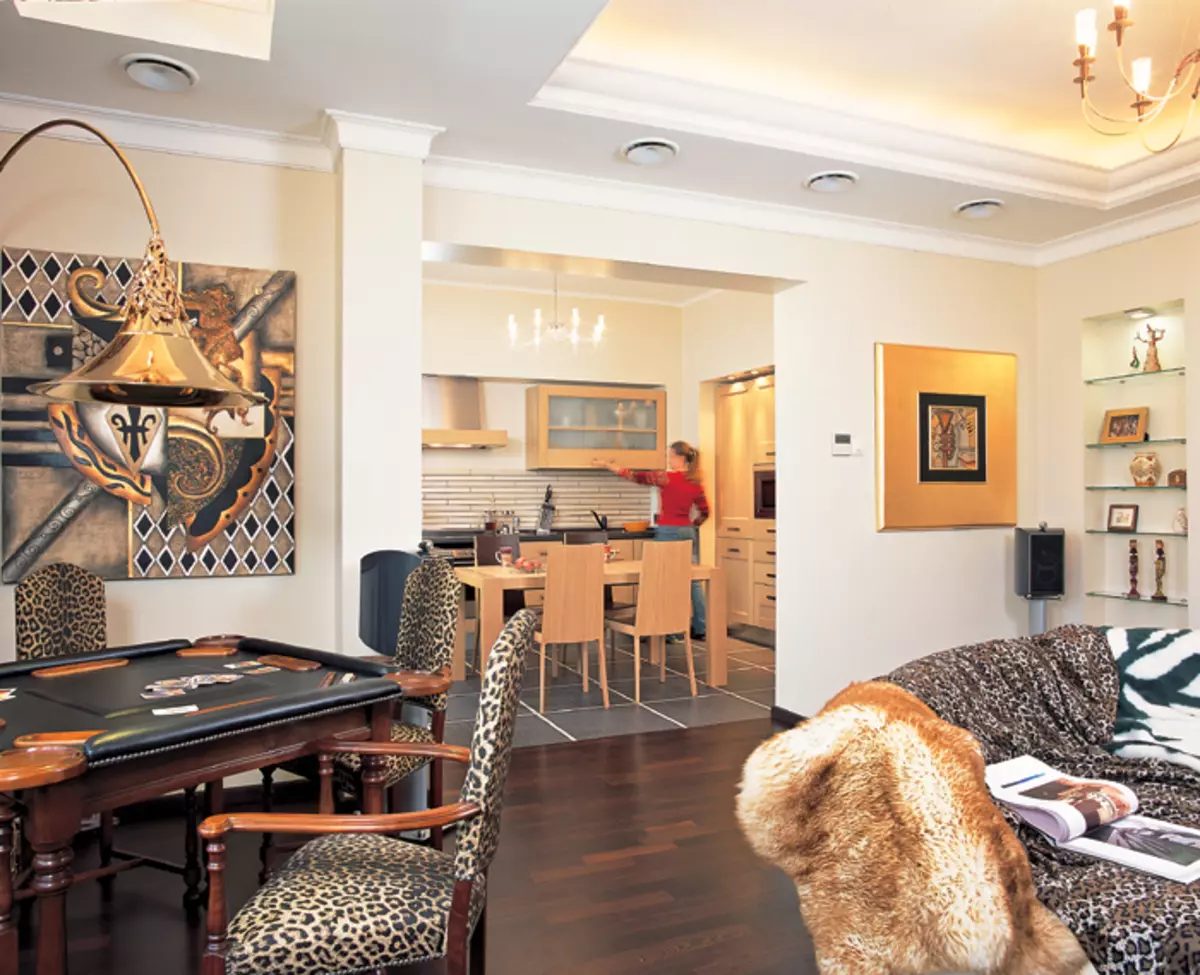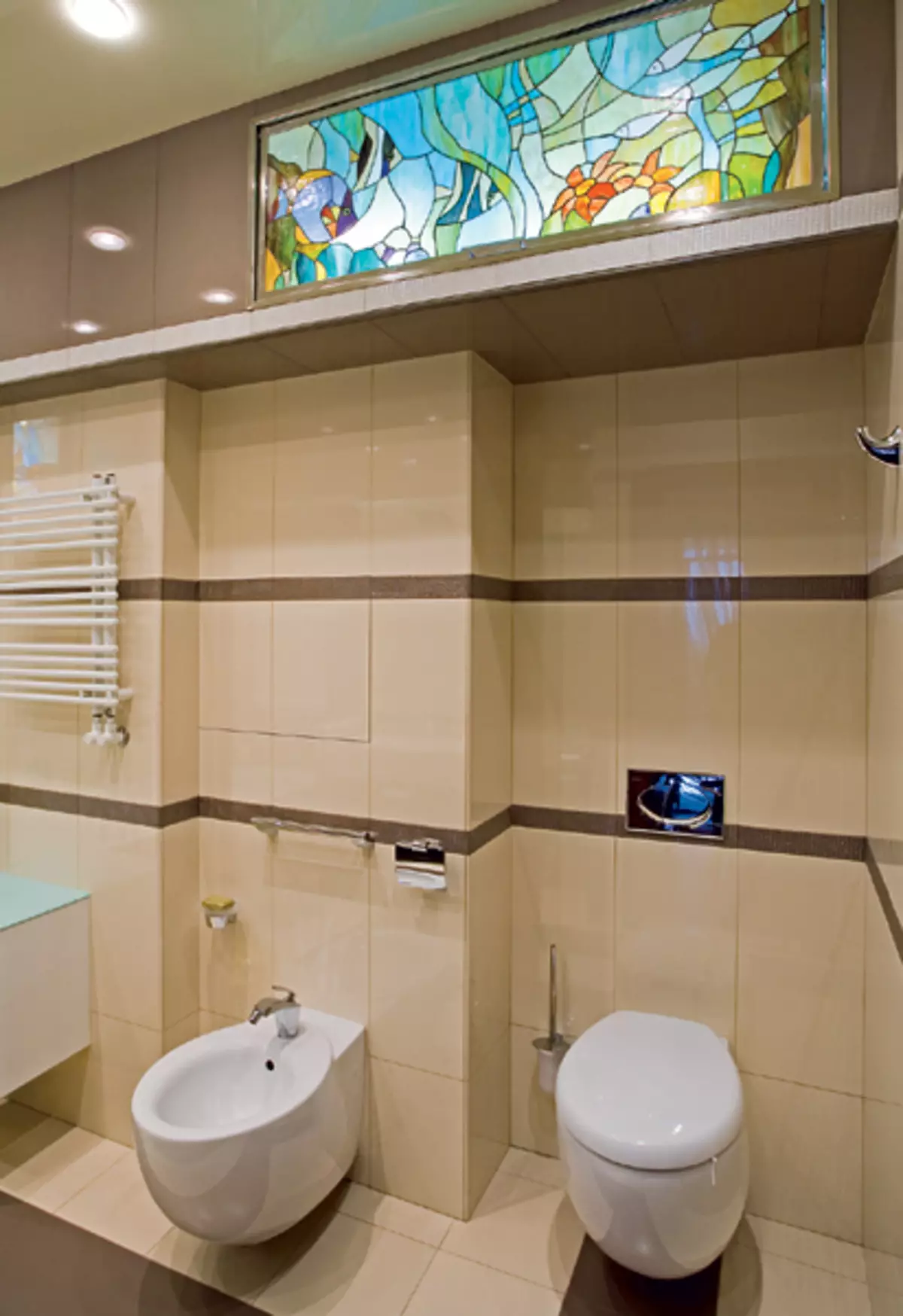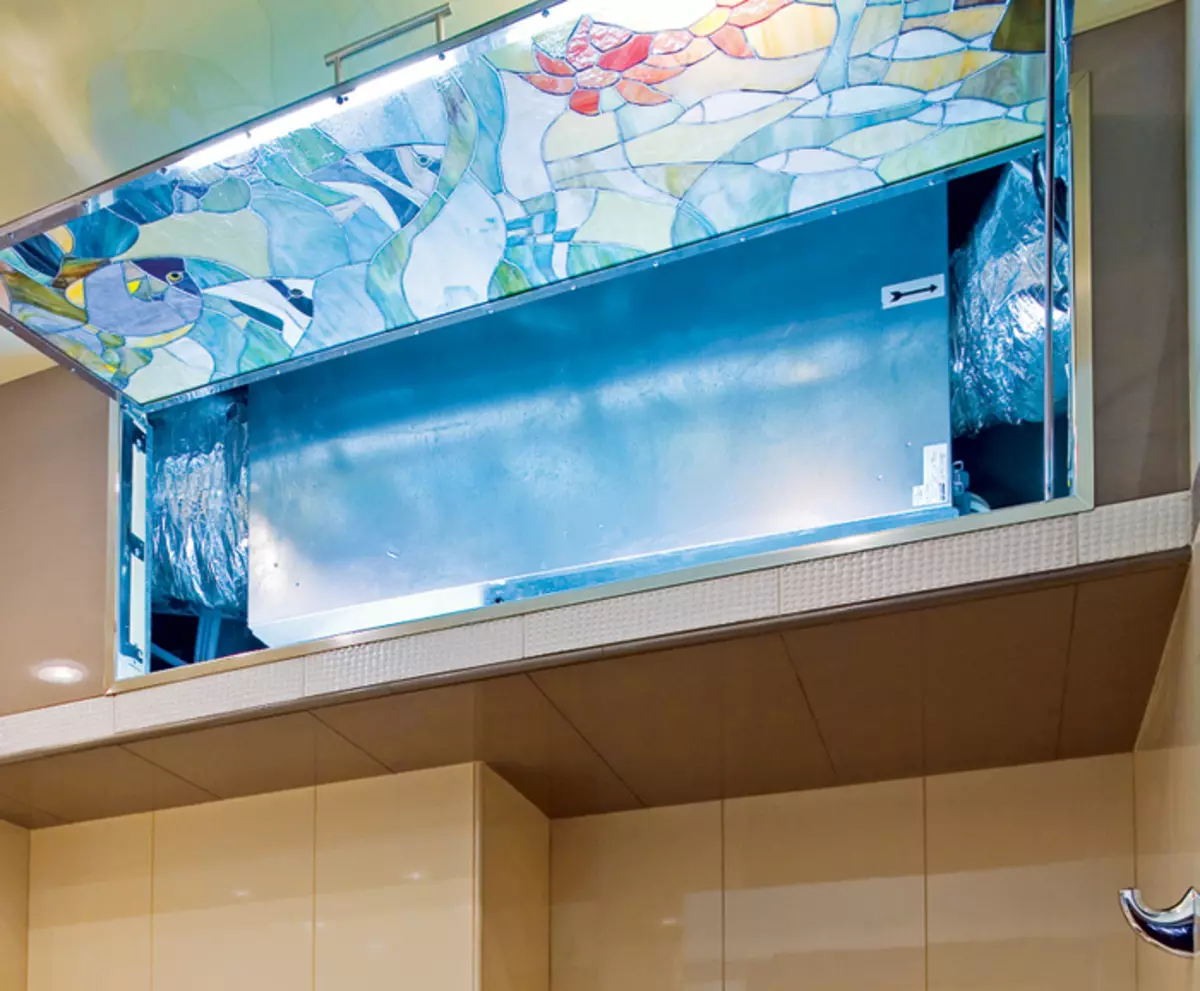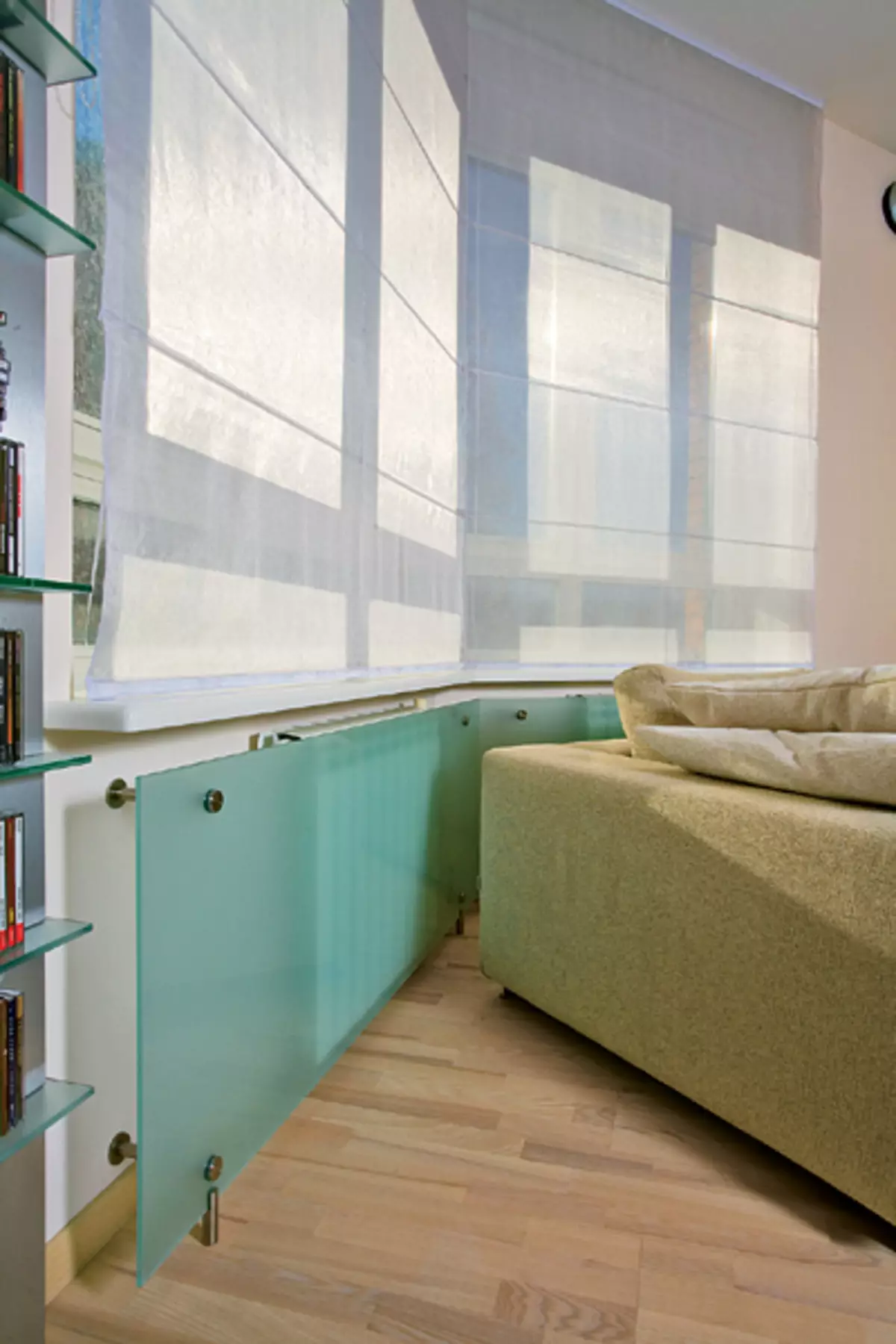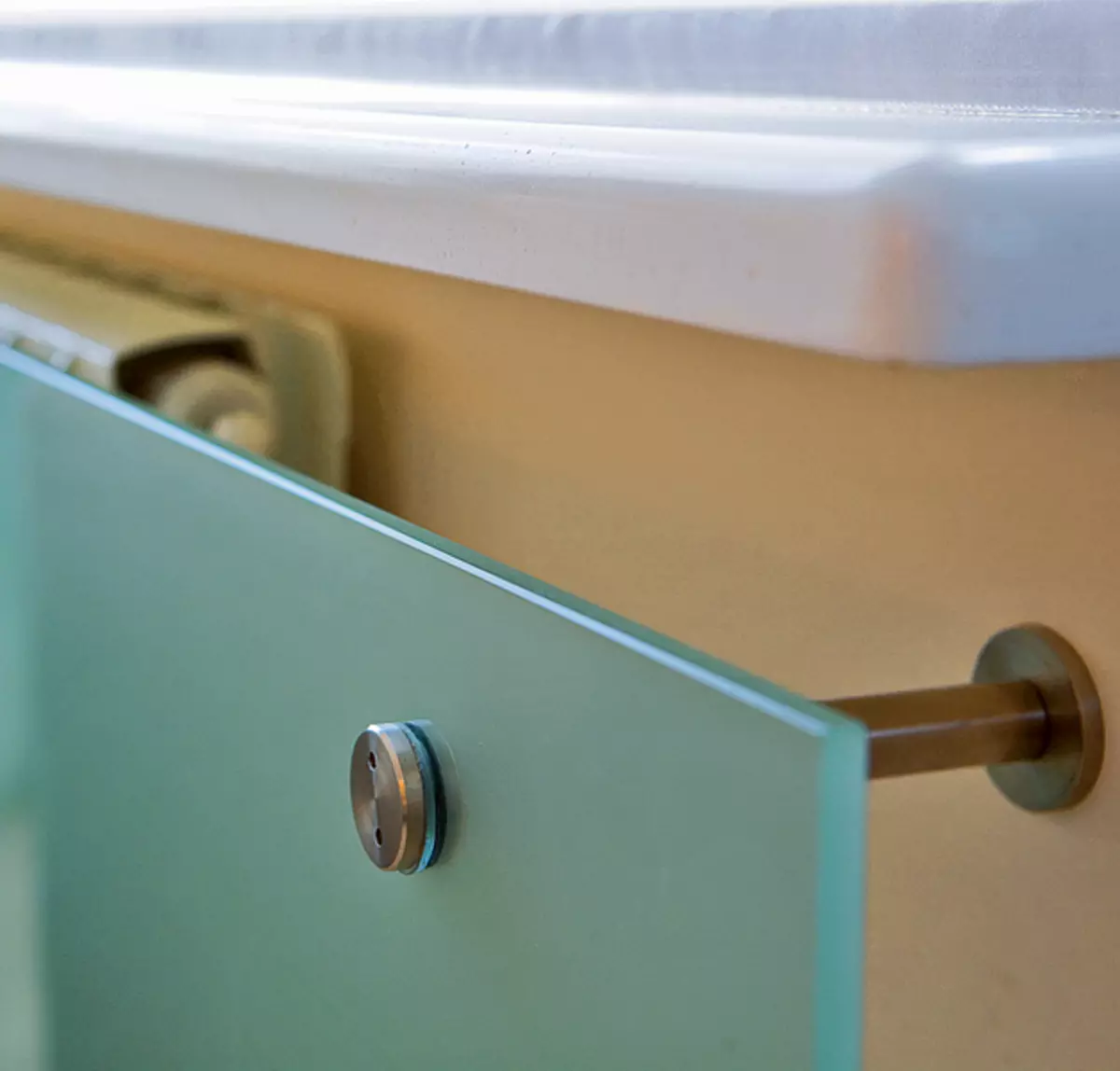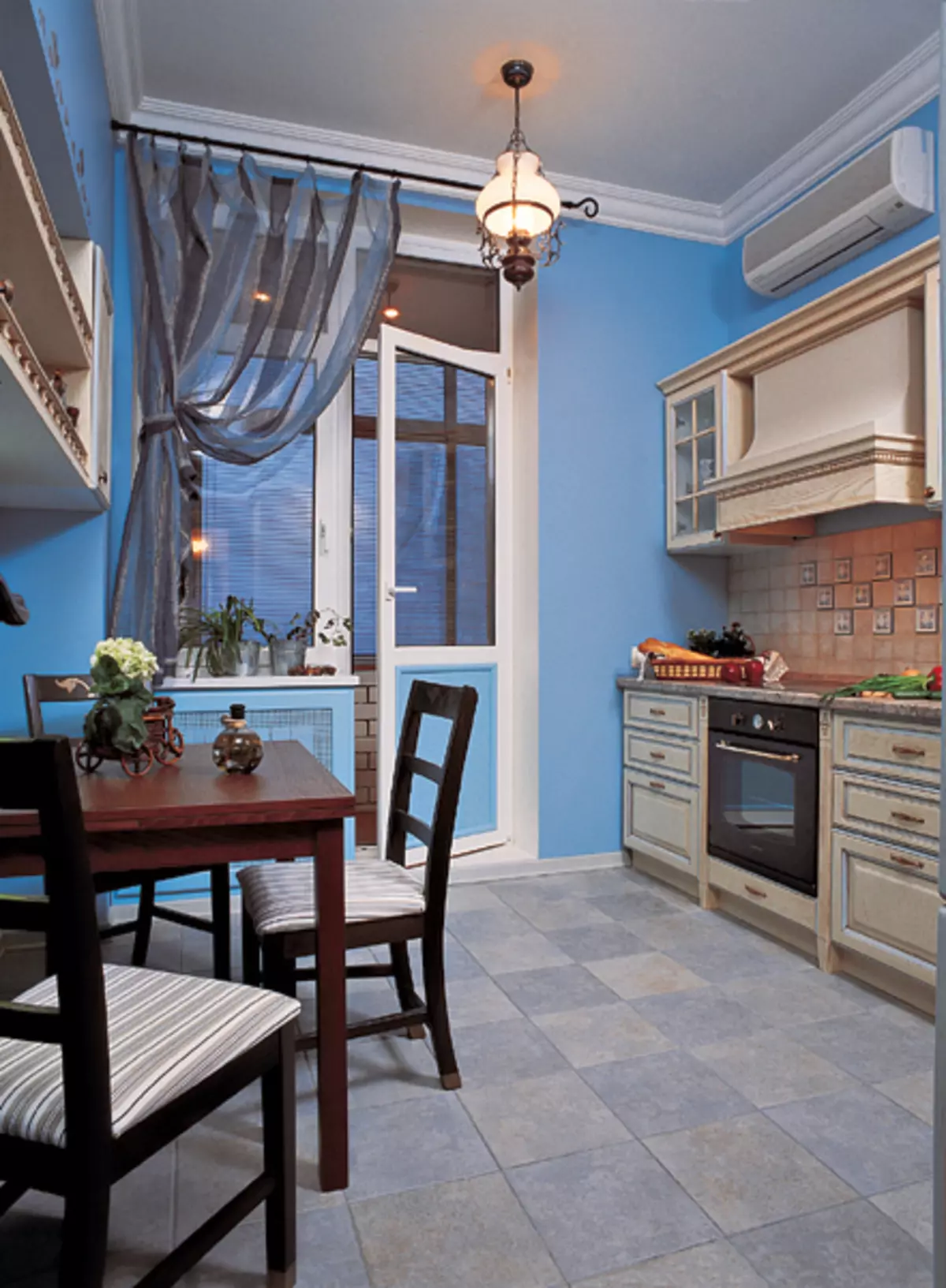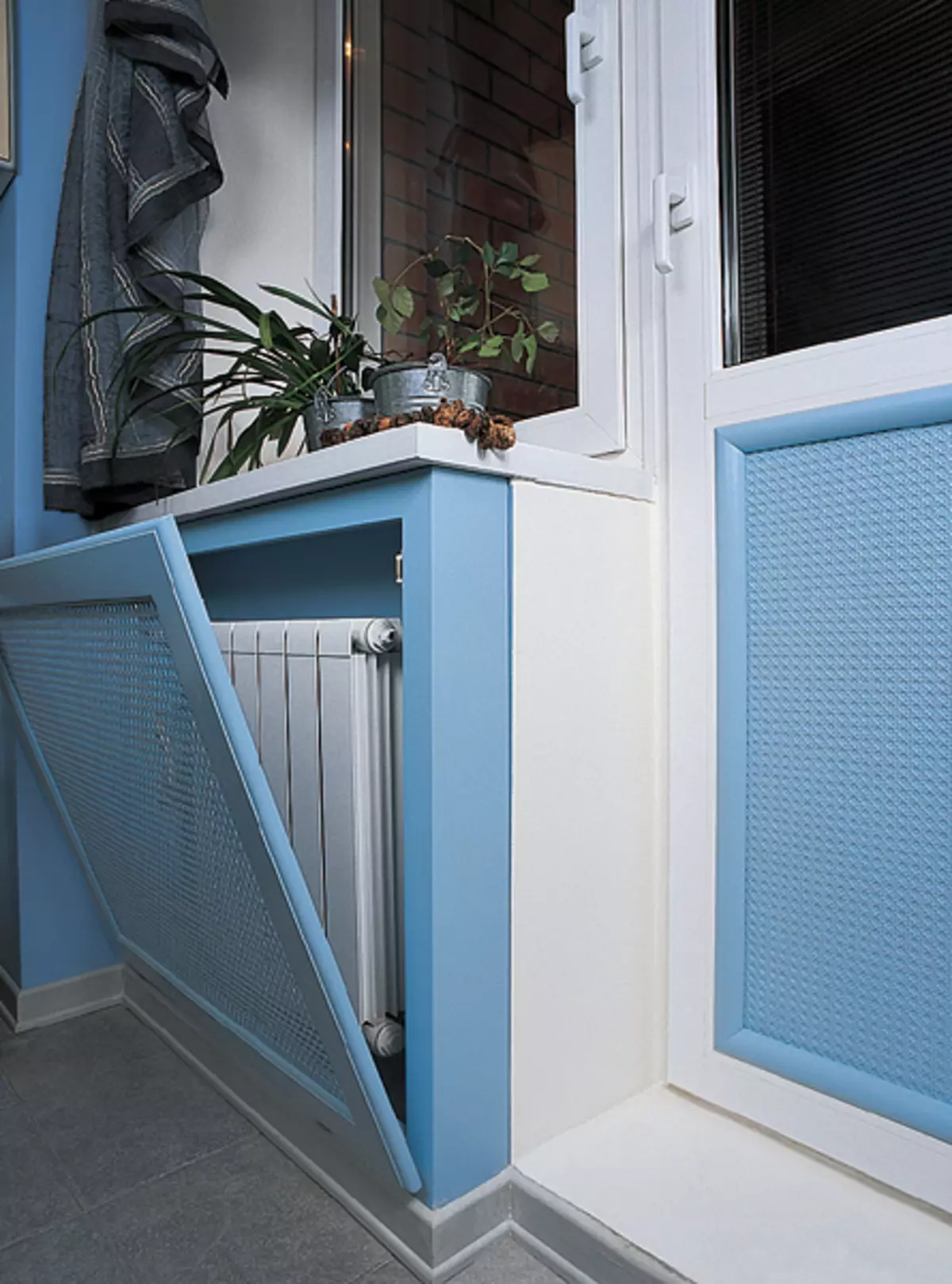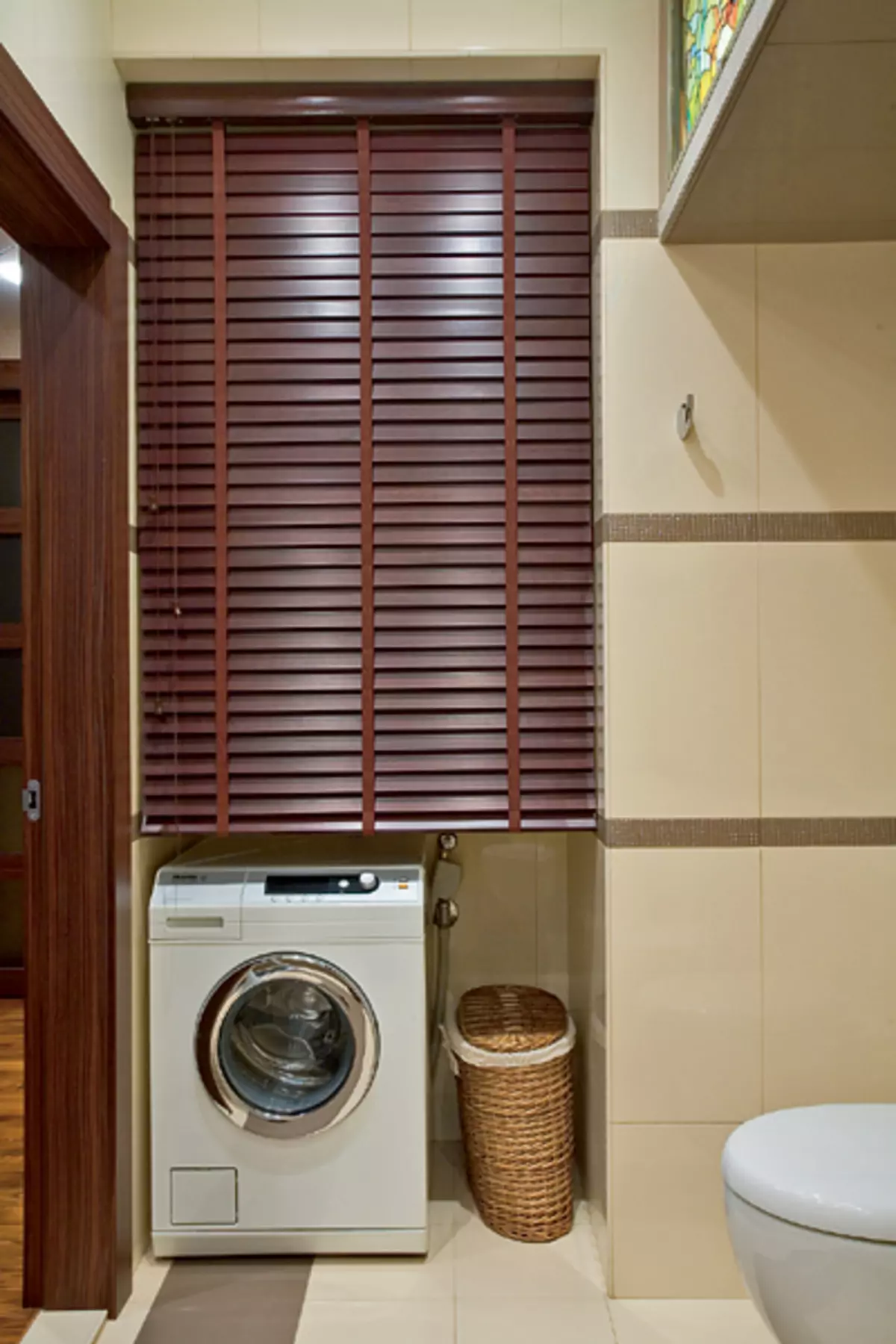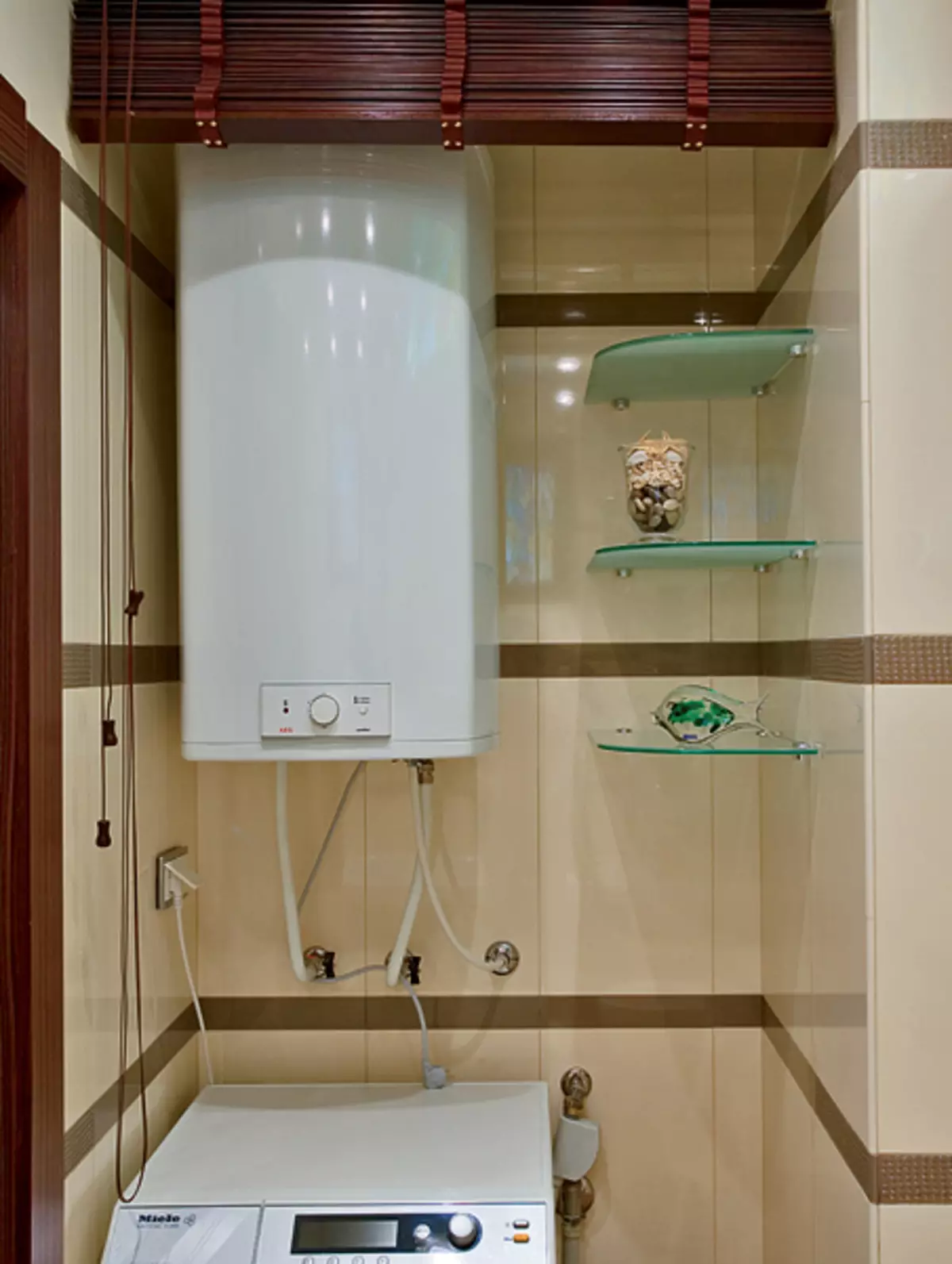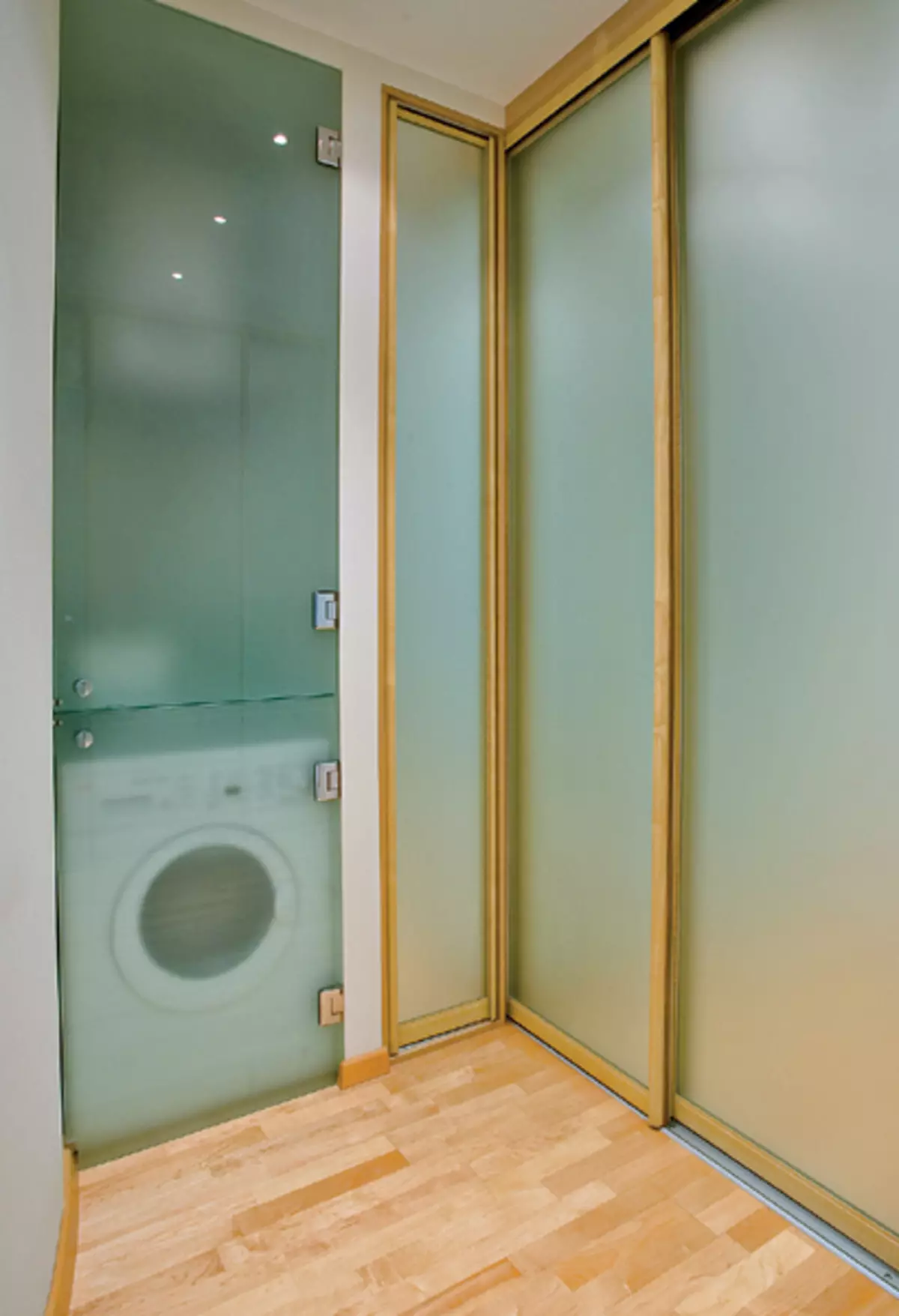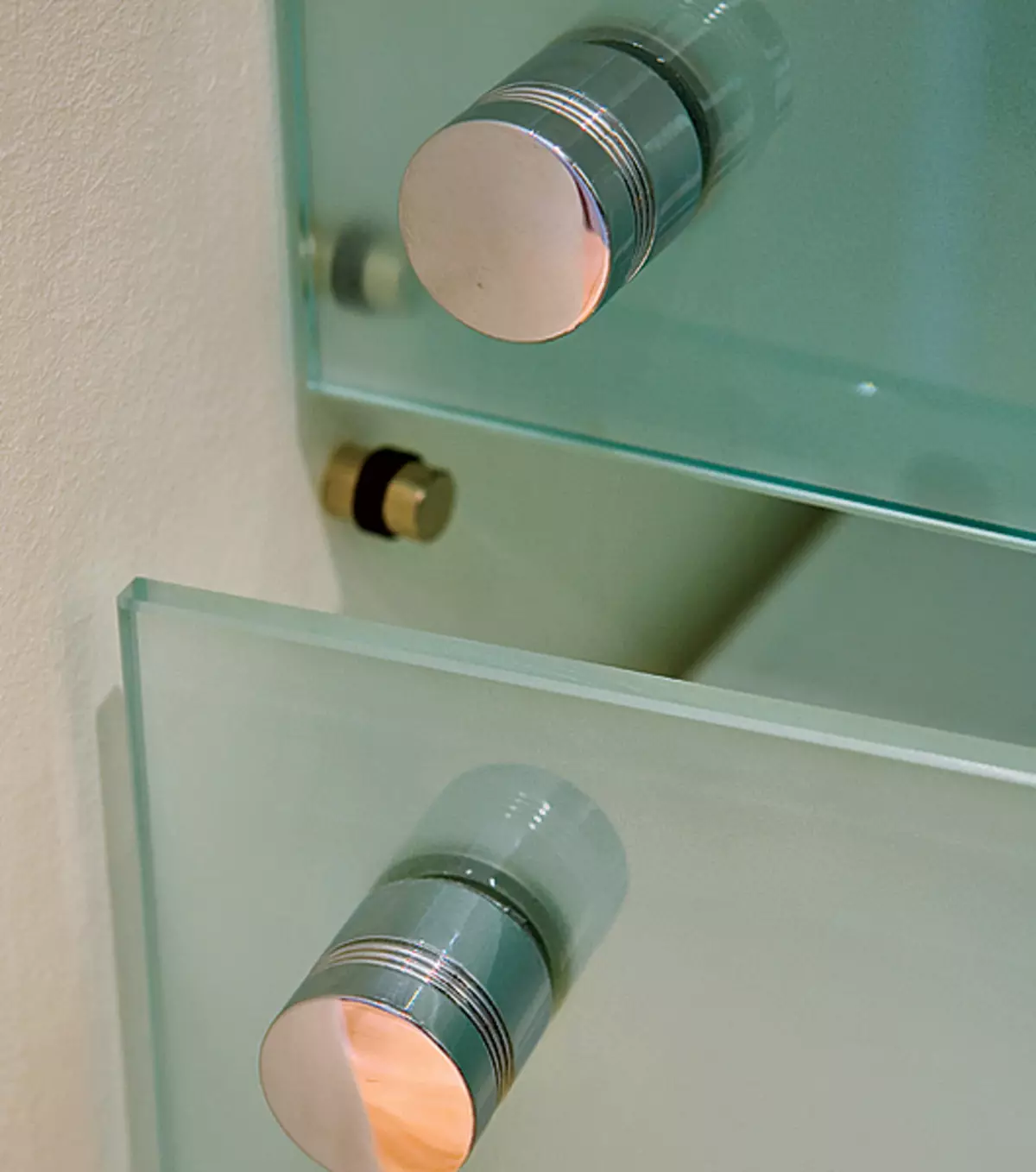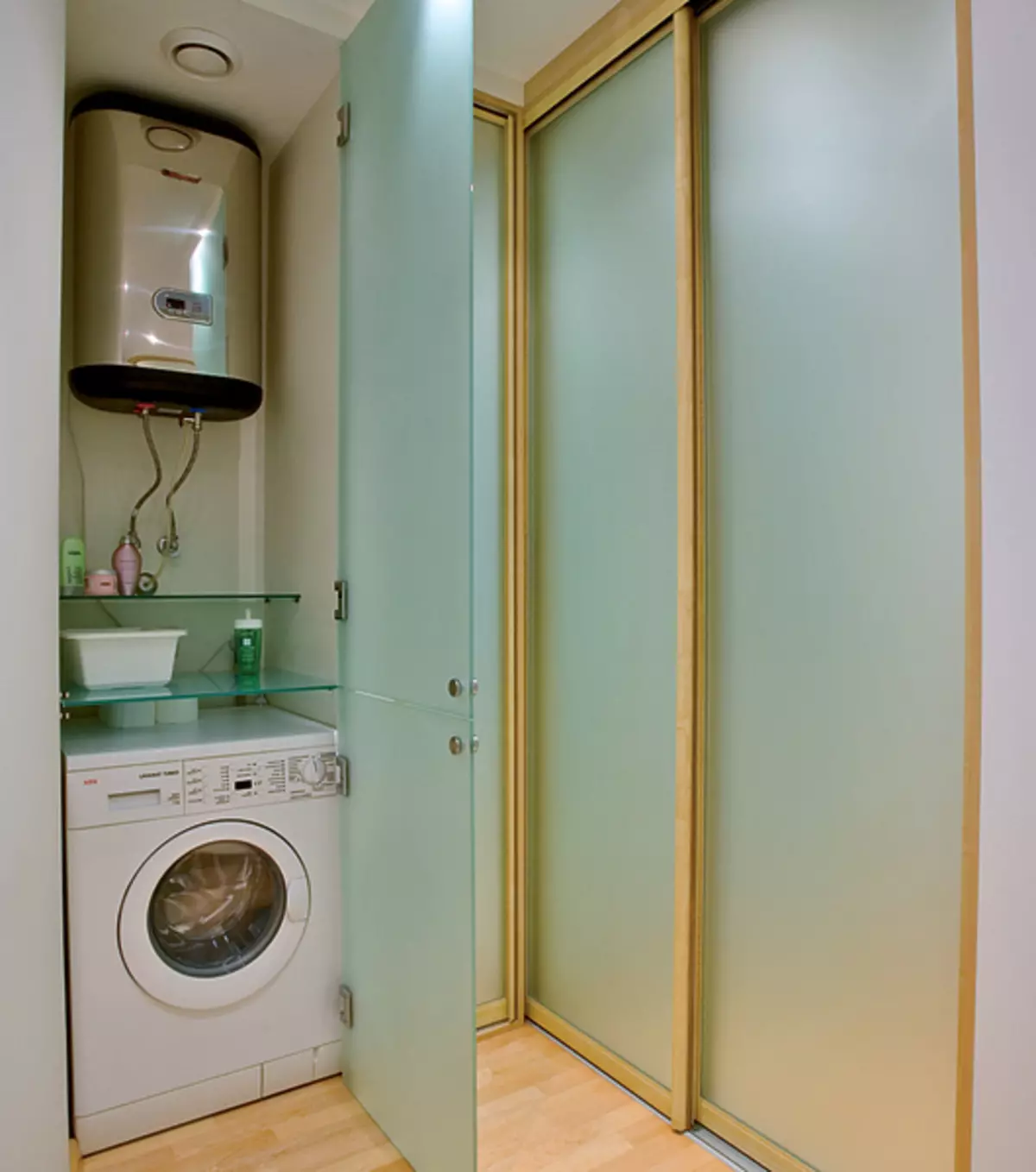Ways to mask in apartments of ventilation systems, heating devices, washing machines and water heaters. Designer development.
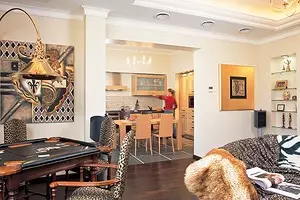
The ventilation system, heating devices and household appliances make the house more comfortable, but do not make it more beautiful. Designers are developing special designs, resort to different tricks so that the presence in the interior of these devices is less noticeable.
| Architect V.Aranovich Installation of the supply and exhaust system is located in the corridor. Access to it opens removable mirror ceiling panels. Two of them are replaced by ventilation lattices, but it is imperceptibly due to reflections in the mirrors. The ceiling design looks decorative and not perceived as masking. When installing cassette and channel air conditioners, as well as forced ventilation systems, the distance between the suspended and the main ceilings becomes critical. Its decrease causes a violation of the geometry of air ducts, which, in turn, impairs the air exchange, and increases the comfort of the ceiling "Davit"). | |
| Architect V.Aranovich Air ducts are laid only along the corridors, so in all residential premises, the ceiling apartment has a maximum height. Gostny, children's and bedroom it reaches 300cm, in corridors- 260cm. 40cm- significant difference! |
|
In order to mask, the air preparation unit can be: hide into a plasterboard niche, to the mezzanine, in the built-in wardrobe; Mount for a tail ceiling, leaving an audit hatch; paint the walls so that it does not stand out on a general background; Locate in the most unfounded room - in the corridor, bathroom, dressing room.
| Designers E. Chassovsky and T.I. The ventilation anemostats of the supply system (Daikin, Japan) are delicately mounted on a protruding box of a plasterboard ceiling, which contains air ducts. Thanks to this, the ceiling is lowered not in the entire room, but partly what looks like an architectural decor. A block of preparation of fresh air is put on the loggia. | |
| Architect A. Morgunov Architectural and construction firm Ladif gene. Director of Belts. The supply installation (Stberg, Sweden) is 1000m3 placed on the mezzanine and closed by stained glass window (Authority of Melgunova) in stainless steel frame. For revision, the glass is folded up and fixed by the backup. Mezol is made of drywall in the form of a light box, so the heavy stained glass window with the frame is attached directly to the overlap. |
|
To disguise the heating batteries, use: Screens from plywood, MDF with perforation or long narrow holes on the facade and / or upper shelf; Screens in the form of wooden blinds; screens from thick durable glass or triplex, between the glasses of which you can insert a photo, a piece of wallpaper or tissue; bonded from a tree or mdf, closed on the facade of a wicker of rattan, plastic, thin wooden stripes; Metal screens or lattices (stainless steel, brass).
| Architects A. Dolgov and N. Skobkina Glass for radiator screens can be different colors (from milky white to black) and textures (smooth, corrugated). It can be painted with special paints, decorate with color appliqué and even engraving. |
|
| Architect T. Ivanova Photo by E. Kulibaba Wooden screen with a rotangle braid is easy to remove to open access to the battery. |
|
Variants of masking washing machines and water heaters: Equipment is hiding in the niches of the bathrooms, in the utility rooms (posterior, pantry). To save space, objects of technology are placed over each other; Built-in models are closed with furniture facades. The wedn room can also be put on the furniture produced for kitchens because it is moisture resistant; Economical and easily transformed options, wooden or plastic blinds, curtains or shirms; Shelves over the washing machines mask the technique, but only partially.
| Architect A. Morgunov Architectural and construction firm Ladif gene. Director of Belts. The equipment is hidden in niche. At the request of the hostess, niche is closed with wooden blinds only by half: the washing machine is very often used, and there should be free access to it. |
|
|
|
|
Architects A.Dolgov and N.Skobkin Water heater and washing machine are in the hallway, adjacent to the bathroom, which, thanks to this, looks branded. The technique is closed by matte glass doors made to order. |

